Swiss Genealogy Book
Swiss Genealogy Project
This Swiss genealogy book was a project many years in the making and was the culmination of my genealogical research, the diligent work of a Swiss genealogist I hired, my efforts to learn family stories and gather photos, and the design project of pulling it all together into a physical book I printed for my Grandpa for Christmas 2024. That same December, I also used this research and information about family places of interest in Switzerland to coordinate a visit there. After the trip, I added my photos from the visit into this book.
My Swiss Brick Wall
In genealogy, a “brick wall” is a point in your family tree where you get stuck and can’t go back any further. No tree can go back forever, so reaching brick walls is normal and expected at some point. In more recent generations, however, they can sometimes be broken through by expanding your search, for example, by going in person to find records that haven’t been digitized.
For years I knew I’d eventually have to do this to uncover my Swiss family history. I couldn’t find digitized records for my family, knew little about their life in Switzerland before they came to the US, and their common surnames made them difficult to distinguish.
One option would have been to embark on a research trip myself, but given my lack of familiarity with Swiss recordkeeping and the language barrier, I decided it made more sense to enlist the help of a local genealogist.
Evidence I Identified
Before working with a genealogist, I pulled together all of my records to give her as much background information as possible so she could spend our contracted time investigating the things I didn’t know.
My Swiss ancestors were my Grandpa’s grandparents, Friedrich Gottlieb Kunz and Albertine Weber. Early on, I decided to focus this project on Albertine Weber and her ancestry. While it would have been possible to research both, for budget and time reasons it made sense to focus on one line at a time.
I chose Albertine for several reasons. First, I already had some evidence to work from, so I felt the chance of success was high. Second, my grandfather grew up with Albertine living in his home, which created a much more personal connection to her than to her husband, who died before my grandfather was born. My grandfather loved Albertine deeply and has shared many fond memories about her. Third, I found the records about her life in the US especially interesting. From local newspapers in Allentown, PA, I learned she became president of the local Swiss American Ladies Club, where she worked to build community among Swiss-German immigrants and preserve their culture. I was also delighted to discover she had creative hobbies, because art and creativity are big passions of mine. Albertine loved needlework, and in my research I saw pieces she crocheted as well as a photo of a needlepoint artwork she made. All of this made Albertine’s ancestry the most practical and exciting line to investigate first.
My grandparents had visited Switzerland many decades ago and had seen Albertine’s baptismal record and a shop that once housed her stepfather’s bakery. While this was a great start, I didn’t have any specific records connected to that information. I wasn’t able to find Swiss records about Albertine, only US records. From the 1910 census, I learned she immigrated in 1888. I confirmed her birthdate and birthplace in several US records. I also had some family stories about why she left for the US, including one about a French actress, but without documents, I had to take these stories with a grain of salt.
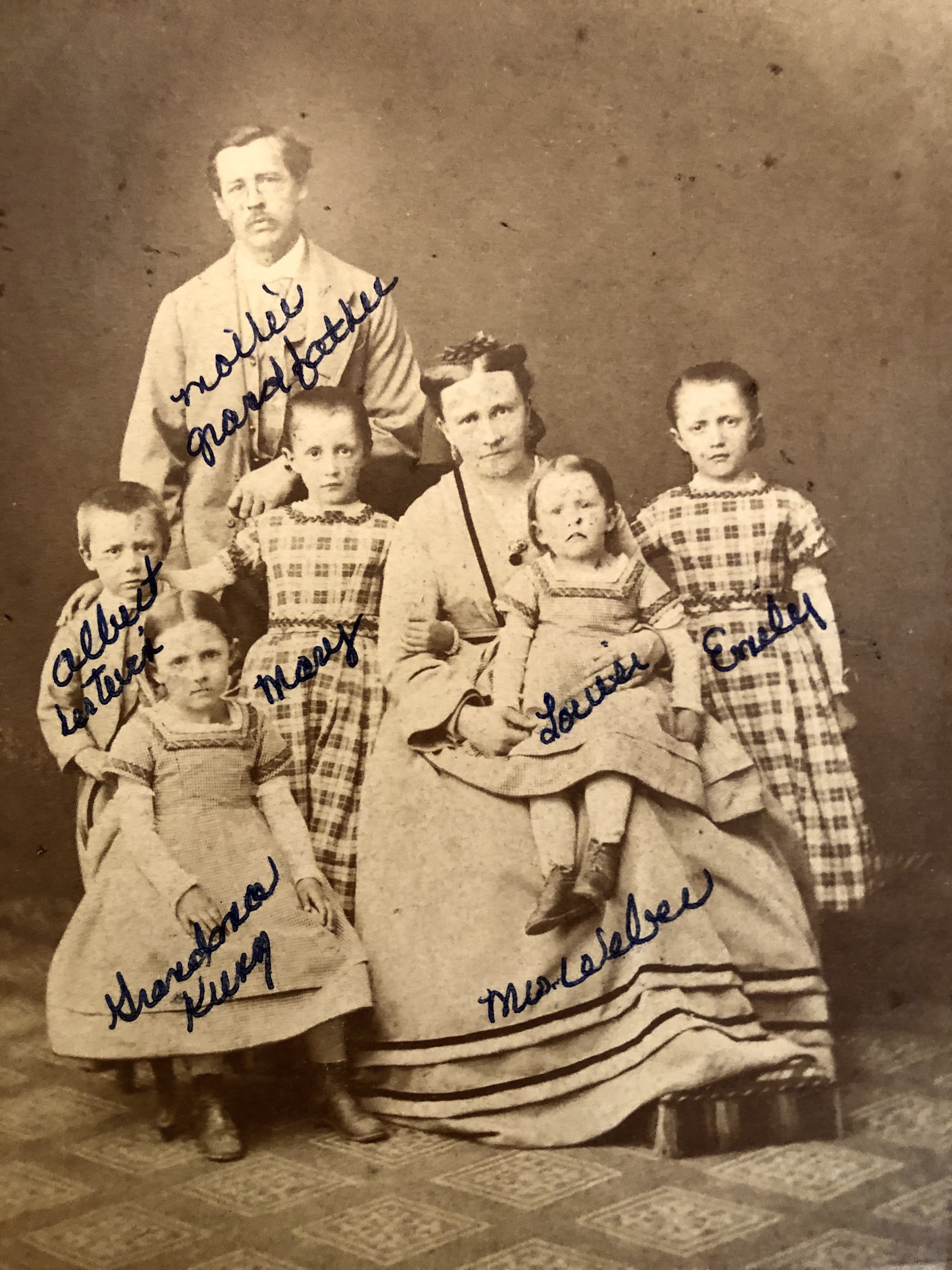
In 2021, I found an old scrapbook page tucked into a travel book from the 1980s with photos of Albertine’s parents and siblings from the mid-1800s. The photos were incredible. Her siblings were labeled, but no one knew her parents’ names. Finding these made me even more determined to learn more about my Swiss ancestors.
I eventually found Albertine’s father’s name by looking at her siblings’ US death certificates. Most listed unknown parents, including Albertine’s,but her sister Emilie (later “Emily”) listed their father as Emil Weber. It’s likely the name was preserved because she was named after him.
Albertine’s mother was harder to trace. Emilie’s death certificate listed her as Anna M. Haggenmasker, but I found nothing under that name. My grandfather believed it was Mary A. Hakamacher, but that also led to a dead end.
Before working with the genealogist, I did another deep dive and finally found promising records on FamilySearch: a marriage between Emil Weber and Maria Margaretha Haggenmacher, as well as baptism records matching their children. I also found Maria’s birth and baptism records, which included her parents’ names. Researching the Haggenmacher surname further confirmed this was likely correct because it is strongly associated with their hometown of Winterthur.
Another last-minute find was Albertine’s marriage record to her husband, Friedrich Gottlieb Kunz. While I’d saved this record for years, I hadn’t reviewed the original. When I did, it confirmed Albertine was born in Meilen, Zurich (as my grandfather had said but I couldn’t verify). It also revealed that her husband was actually from Unterendingen, Aargau, not from Winterthur as we had believed. This was exciting, but also solidified that researching the Kunz line would be a separate project, since none of the Aargau records are digitized and it wasn’t feasible to hire the genealogist to work in both regions.
Working with a Swiss Genealogist
After compiling this background information, I handed the project to Swiss genealogist Yvonne Hausheer. Based in Zurich, the canton of both Winterthur and Meilen, where my ancestors lived, she traveled to these towns and visited the Zurich state archives.
I thoroughly enjoyed working with a professional genealogist for the first time. Especially since all the relevant records were in Swiss German, her expertise in locating and confirming them was invaluable.
Through her research, Yvonne built robust family trees for both the Weber and Haggenmacher sides of Albertine’s ancestry. The Haggenmacher line traced back to the 16th century, aided by a detailed family history published in 1957. She also reviewed town records to identify several locations where the families lived and worked, which I later visited. Other notable findings included Albertine’s two siblings who died in infancy and a couple of divorces on the Weber side, which was surprising in Switzerland’s traditional and religious society. Yvonne also confirmed the identity of Albertine’s stepfather, Julius Stutz, and disproved the rumor that he had married a French actress.
Designing the Book
After receiving Yvonne’s findings, I decided to create a book compiling and reformatting all the information. I chose a painting of early Switzerland for the cover and structured the book into several sections:
- Introduction: My motivations and process.
- Albertine Kunz Profile: A narrative combining my grandfather’s stories with Albertine’s records, plus photos of her and her needlework.
- Summary of Findings: An outline of Yvonne’s research.
- Family Trees: Reformatted trees with added photos and English translations of German terms.
- Maps of Winterthur: Historical and modern maps for comparison.
- Family Homes and Businesses: Images and descriptions of places Yvonne identified, updated with photos from my December 2024 trip.
- Family Photo Scrapbook: A creative section using Canva to build digital scrapbook pages with themed layouts reflecting different eras.
My Trip to Switzerland
In December 2024, I took an amazing week-long trip that included a couple of days in Zurich, several days in the Alsace region of France, and a few days in Stuttgart, Germany, where Houlton’s dad was living. With all this research in mind, it was deeply rewarding to visit places where my family had lived and worked.
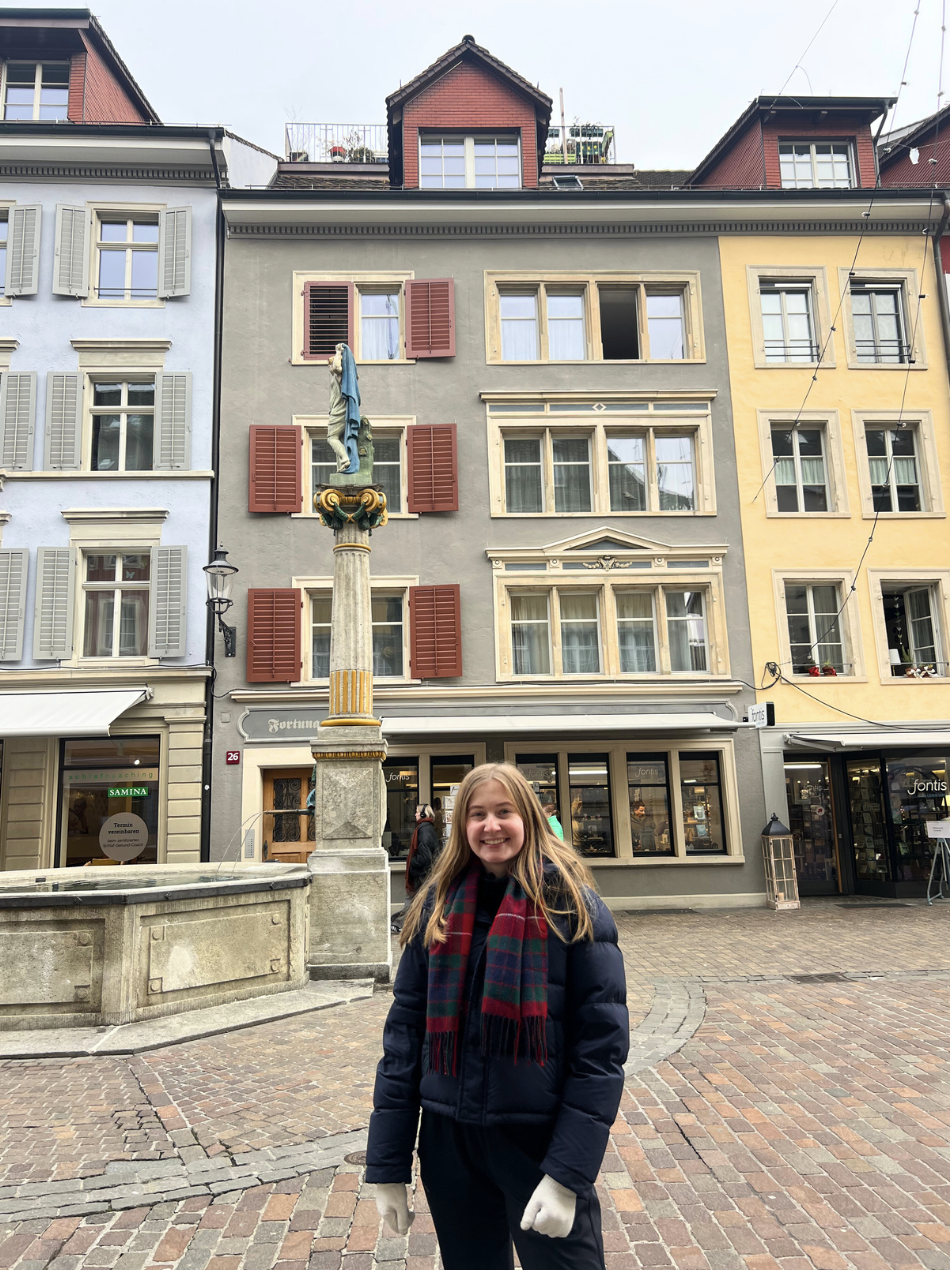
Julius Stutz’s bakery and inn is now a bookstore called Fontis-Buchhandlung. Original molding and signage from the bakery remain visible.
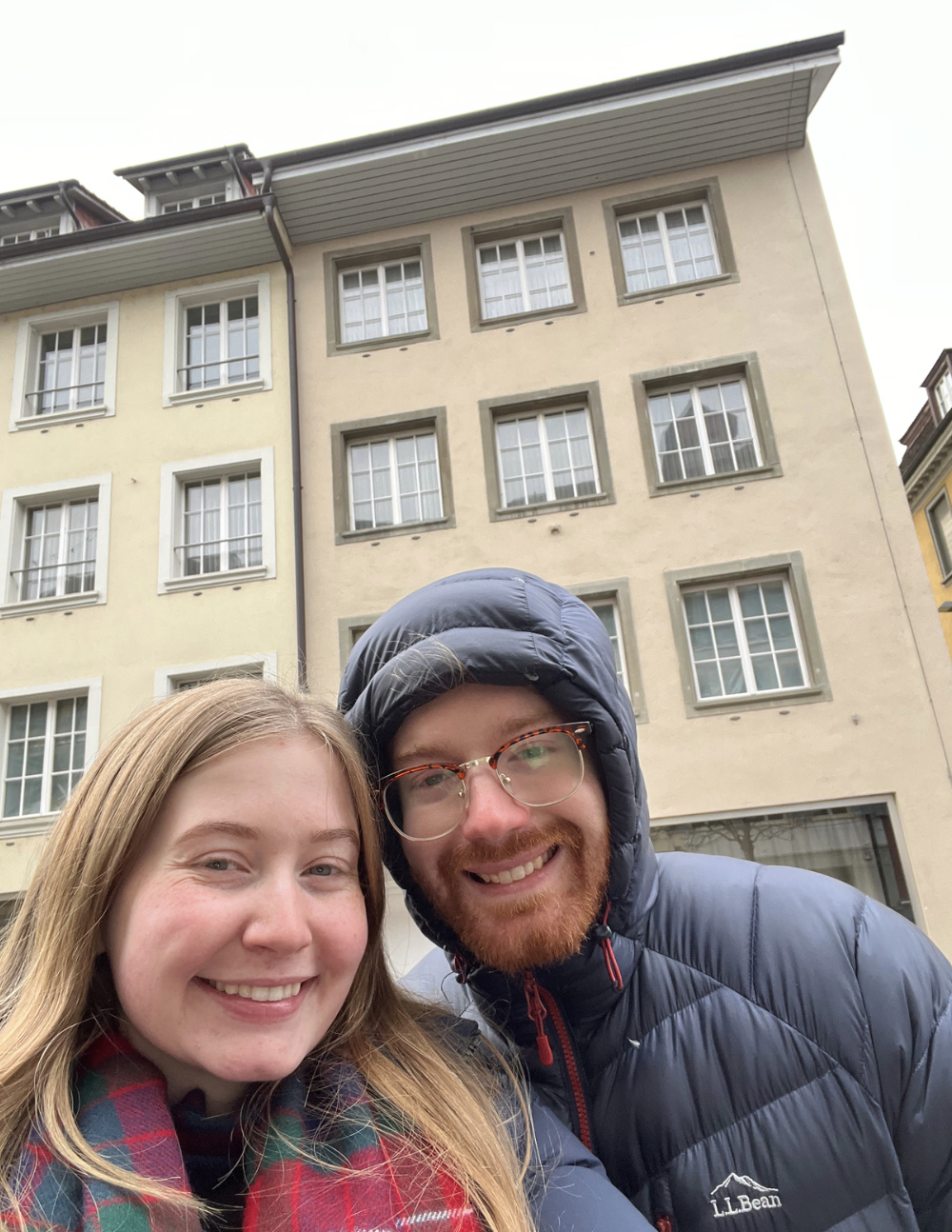
Eduard Haggenmacher’s first butcher shop is currently vacant. Signage indicated it has been unused since 2022, when it was last a police building. It sits across the street from Stutz’s old bakery.
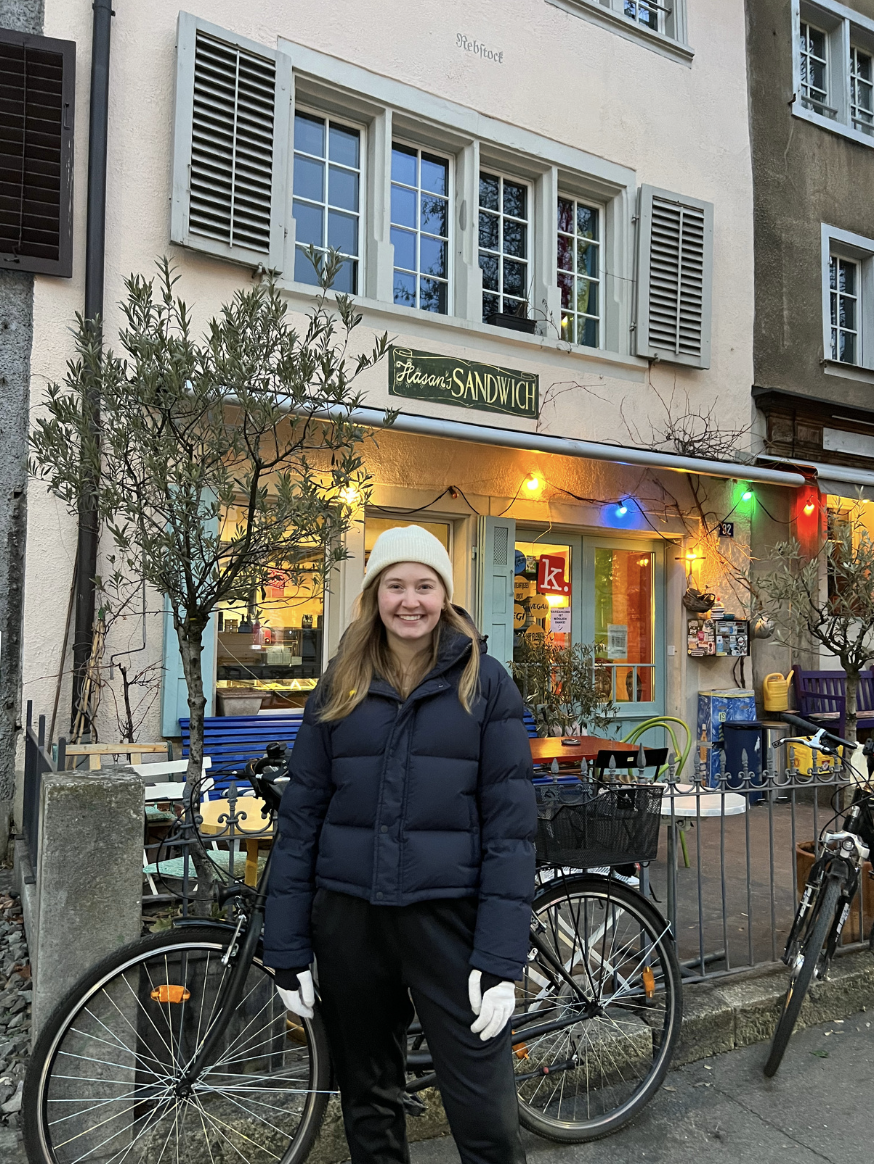
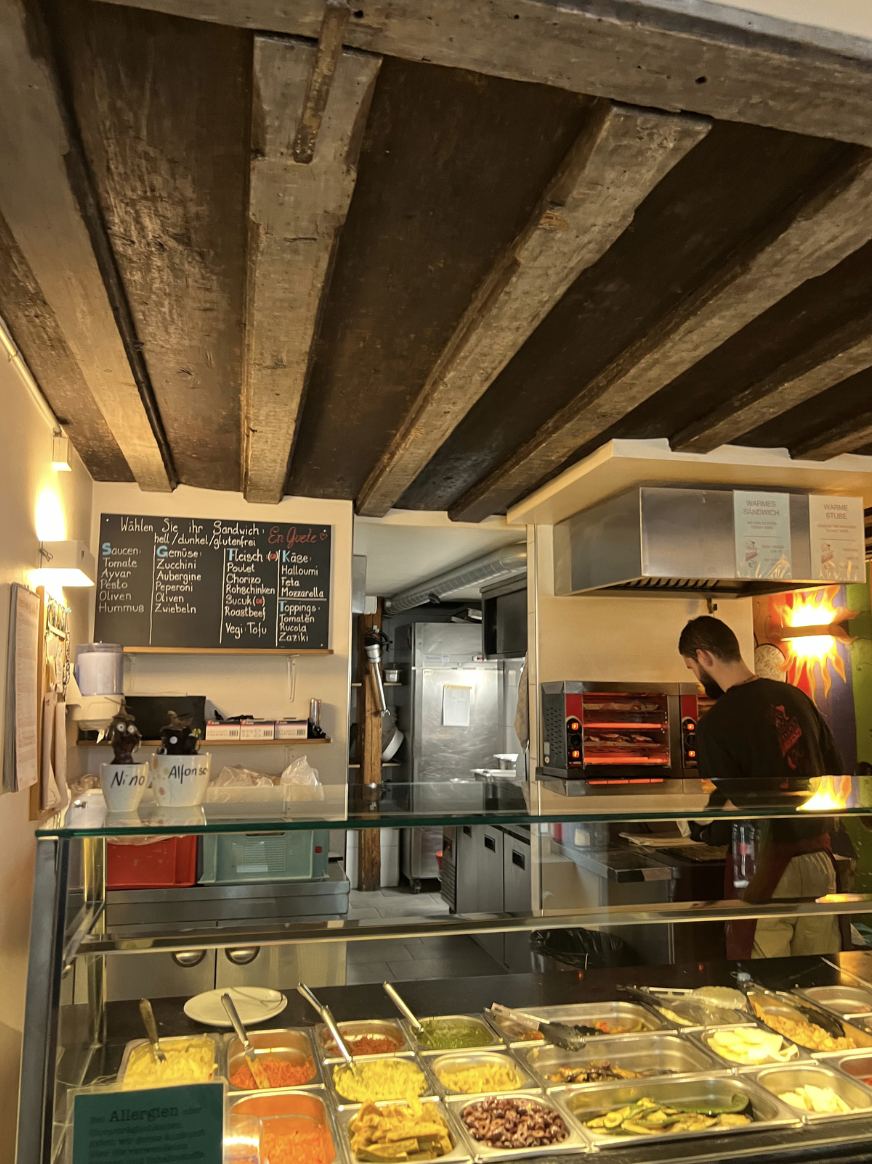
Eduard Haggenmacher’s butcher and tavern business is now a popular sandwich shop called Hasan’s Sandwich. Houlton and I ate there and admired the beautiful old ceiling beams. The building’s original name, Rebstock, is still visible outside.
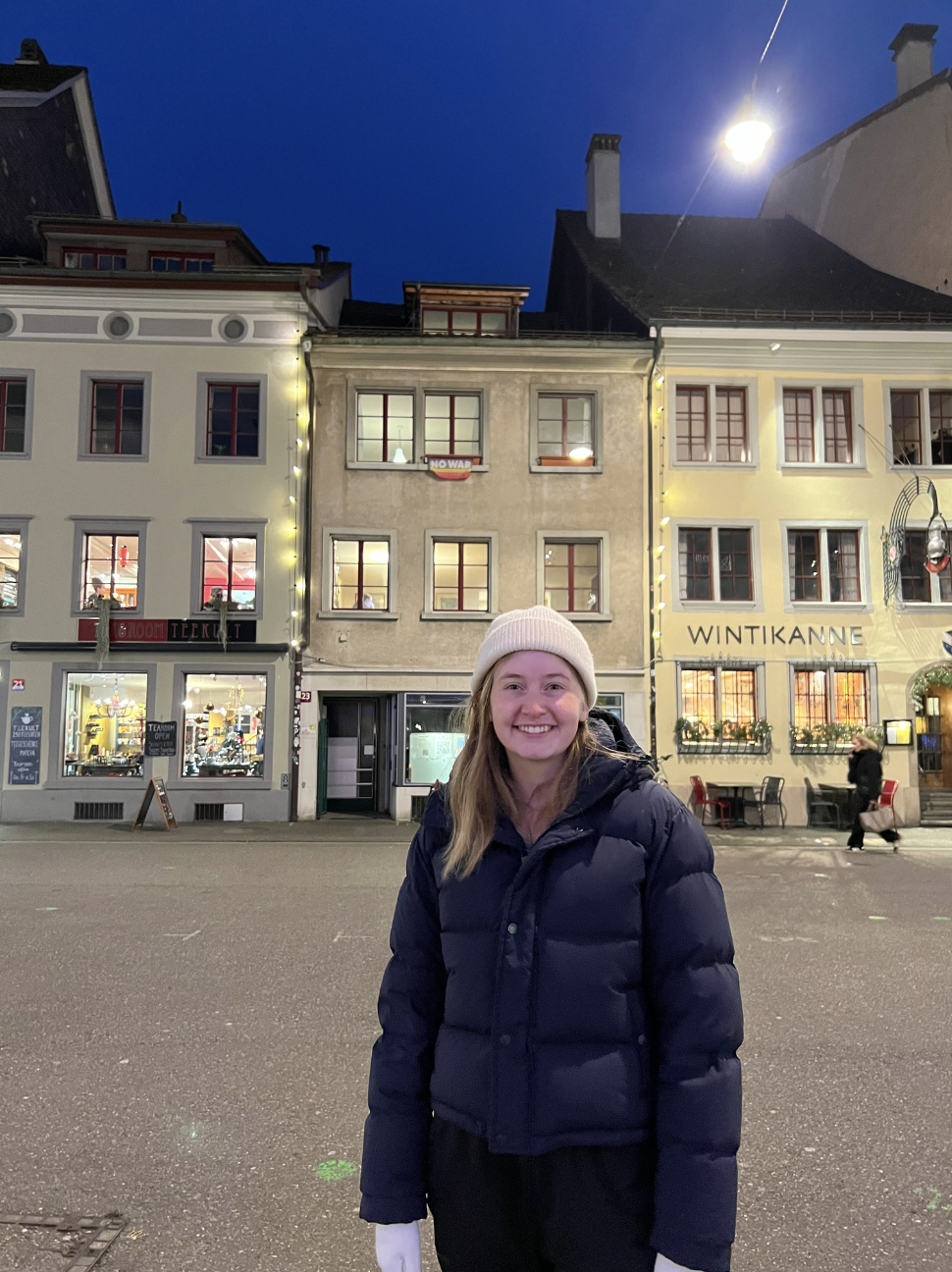
The earliest known Haggenmacher residence is now the office of MSM Group, a professional services company.
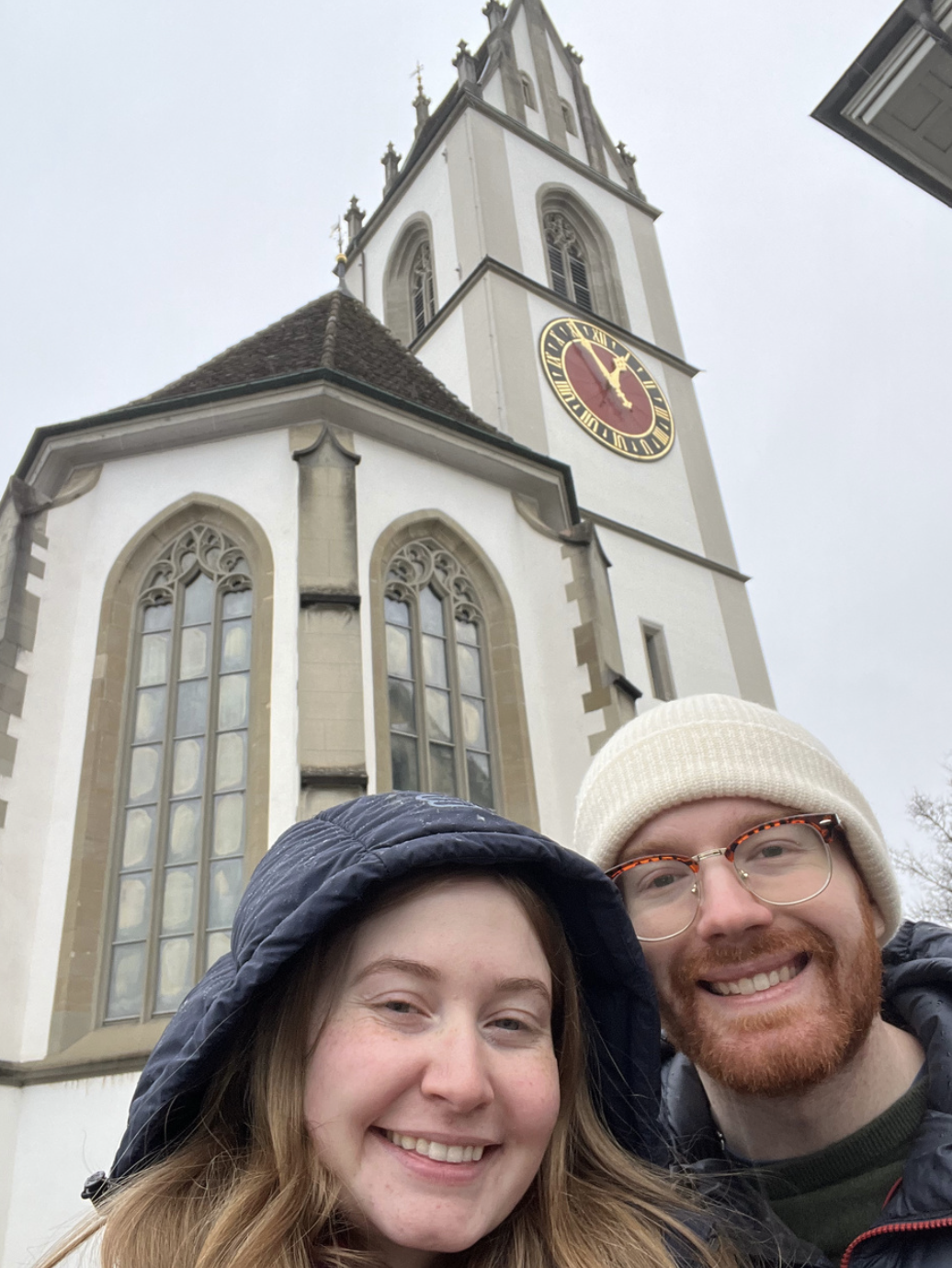
We also visited Meilen, where Albertine was raised and likely born. We saw the church where she was baptized, located right on Lake Zurich. Despite the rain, the lake was beautiful, and we watched swans, coots, and gulls drifting by.